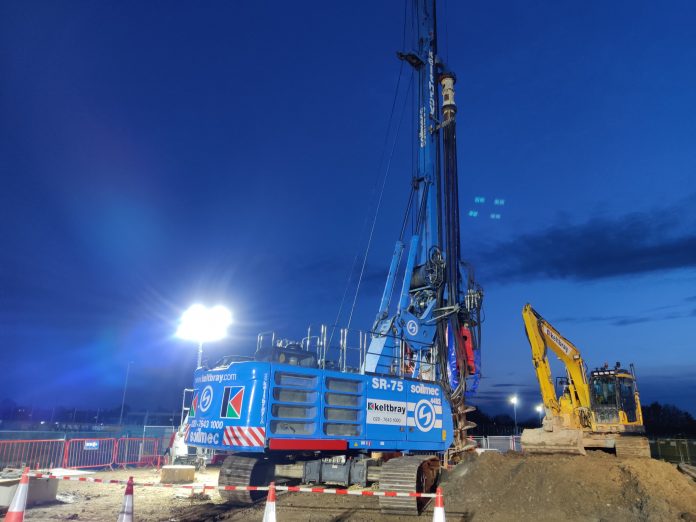Specialist engineering company Keltbray has signed an agreement with City, University of London for the development of Sustainable Reusable Pile (or Hollow Pile)
The development of hollow pile is part of Keltbray’s commitment to reducing carbon emissions across its project.
Keltbray has agreed an exclusive licence of the City, University of London IP for the Hollow pile. The key benefit of the Hollow pile is that it significantly reduces the embodied carbon within bored piling foundations by reducing the total volume of concrete required in each pile.
Keltbray is working with construction partners on combining the product with low carbon concretes in order to further reduce the embodied carbon within the piles by up to 90% – compared to traditional bored piles – depending on the diameter.
The engineering firm has also partnered with UK geothermal contracting specialists G-Core to develop the user interface and market for geothermal energy storage and generation within the Hollow piles.
Early trials indicate performance enhancement of over 60% in terms of geothermal conductivity compared to traditional energy piles.
‘Revolutionise the way deep foundations are utilised’
Stuart Norman, managing director for Keltbray’s Piling Division, said: “This agreement and transfer of ownership of IP is a major success for the KTP scheme.
“Implementing the product within construction and infrastructure projects will have a huge impact on carbon-reduction, specifically when considering the whole life cycle costing benefits that the combination of a deep pile foundation with combined energy storage and generation potential will bring”.
Michael Pelken, innovation director for Keltbray, commented: “We have developed a close and extremely productive relationship with City, University of London and are very pleased to exclusively license their hollow pile patent.
“This is a mutually beneficial collaboration, supported by Innovate UK, that closes acknowledged gaps between academic and industry led research and development models.
“We are collectively working on solutions that will revolutionise the way deep foundations are utilised, including the use of building integrated energy and environmental control systems.
“We are also developing component sets designed for manufacture and assembly as part of the Platform Design Program run by the UK Construction Innovation Hub.
“We aim to do more of such progressive work with our academic partners to support productivity and sustainability in construction.”
Dr Andrew McNamara, senior lecturer in City’s department of civil engineering, added: “City has a strong track record of research into performance and innovation in deep foundations.
“Hollow piles are an exciting part of our contribution in this area because developers will begin to regard construction of these highly sustainable deep foundations as an investment in a valuable asset that will continue to add value long after they are first constructed.
“We are delighted that Keltbray have recognised the potential of City’s research and will be commercialising this green technology that has substantial benefits over conventional piling methods, opening up new and exciting opportunities in the construction sector.”


















